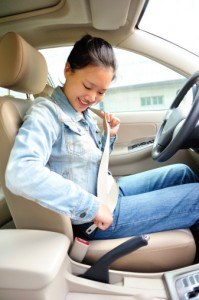 The first patent for a seatbelt in the U.S. was granted in 1885. The first retractable seatbelts were invented in 1946. We’ve come a long way in automotive safety in the last 130 years, but seatbelt use is still not at 100 percent.
The first patent for a seatbelt in the U.S. was granted in 1885. The first retractable seatbelts were invented in 1946. We’ve come a long way in automotive safety in the last 130 years, but seatbelt use is still not at 100 percent.
This is despite the fact that wearing a seatbelt may mean the difference between life and death, despite laws mandating their use, and despite all new passenger cars being equipped with safety belts for decades. Far too many people still neglect their safety in the interest of comfort or convenience.
The National Transportation Safety Board (NTSB) calls safety belts the single most effective device for preventing death and injuries in traffic accidents. It’s for this reason that the NTSB has put seatbelt use on its 2014 Most Wanted List of Critical Changes Needed to Reduce Transportation Accidents and Save Lives.
Seatbelts Reduce the Risk of Fatal Injuries by 45 Percent for Front-Seat Occupants.
The National Safety Council (NSC) reports that seatbelt use saved more than 75,000 lives during a recent four-year period. But more could be saved if everyone buckled up. Some 42 percent of motor vehicle occupants killed in accidents weren’t wearing seatbelts.
The good news is that seatbelt use is growing. In 2009, seatbelt compliance averaged 88 percent across the country. That’s compared with only 69 percent in 1998.
Along with awareness campaigns, seatbelt laws and enforcement have helped increase compliance. In New Jersey, all occupants must be buckled up or face fines when pulled over. In New York, the seatbelt laws are slightly less comprehensive, applying to all occupants under 16 years old but applying to adults only when they are seated in the front seat.
Still, some people refuse to buckle up.
Who’s Not Wearing Seatbelts?
The NSC reports that those least likely to wear seatbelts are those who are most likely to be in a crash – young drivers. The most dangerous time in a driver’s life is in the first 12 months of having a license.
The risk of a teen being involved in a car accident is three times that of an adult. More than half of teens killed in these auto accidents were not wearing seatbelts.
Because teens are likely to learn their driving behaviors from their parents, it’s crucial that parents set a good example. This means buckling up every single time you get into a vehicle.
As a responsible driver, make all passengers wear their seatbelts. In the case of children, explain why wearing seatbelts is not optional, but mandatory. If you’re a passenger in someone else’s vehicle, don’t be afraid to speak up if the driver doesn’t buckle up. You could save his or her life.
